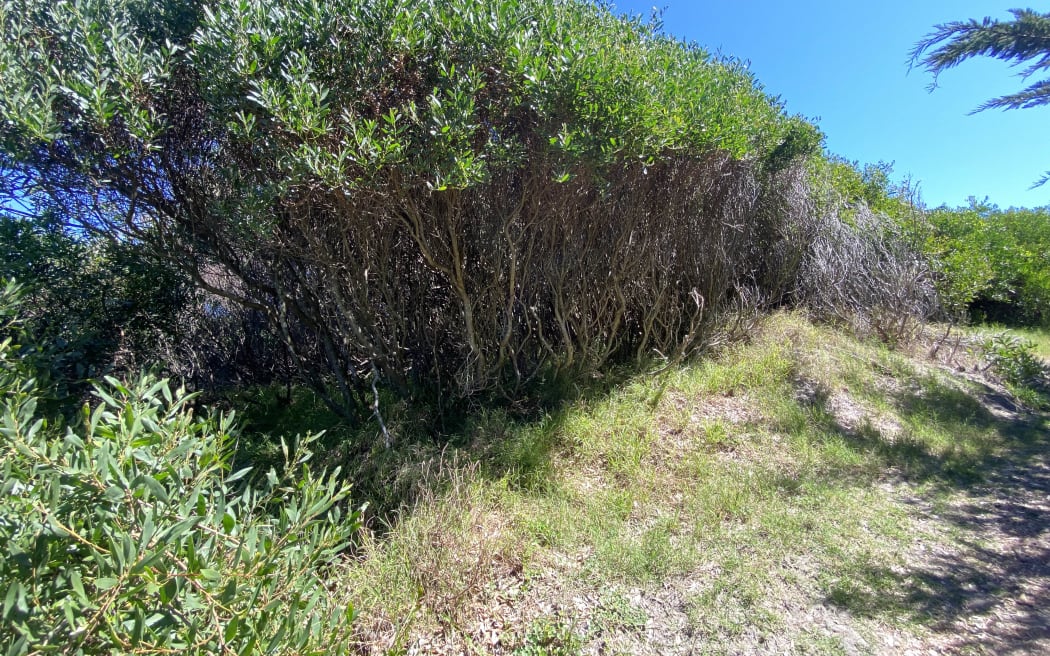When other methods of pest control fail, sometimes scientists need to turn to nature itself.

Trichilogaster acaciaelongifoliae - an Australian bud-galling wasp Photo: Supplied/Horizons
We know New Zealand's ecosystem is precious: our islands are home to flora and fauna not found anywhere else in the world.
This is special, but it also means we have to be careful. An introduced species from another part of the world can quickly become invasive, take a foothold and wreak havoc.
One way of controlling invasive species is to bring in yet another species which essentially prey on the thing you don't like.
This is called biological control.
Subject to approval, this is what we could be turning to in order to control an invasive acacia shrub, the Sydney golden wattle.
And the control agent in this case? A tiny foreign wasp.
What's the problem?
The Sydney golden wattle is native to south-east Australia. It was originally introduced to New Zealand in the late 19th century for ornamental purposes. It's also been used for dune stabilisation.
But it's turned invasive and in a number of coastal areas and wetlands around the country, it's becoming a problem.

Sydney golden wattle Photo: Supplied/Horizons
Angela Bownes, an entomologist at Manaaki Whenua/Landcare Research, says the shrub is a prolific seed producer and it has a very fast growth rate. That means it can out-compete native species, which has cascading effects on biodiversity.
It's highly flammable, which is a problem when you consider the increasing frequency and intensity of fires due to climate change.
How have we tried to stop the Sydney golden wattle?
Bownes says alternative control measures have been tried, such as the use of chemicals, but it isn't sustainable.
As well as the negative environmental effects of the use of chemicals, it's difficult to provide the required level of control over a long period, due to the maintenance and expense required.
In the meantime, the problems with Sydney golden wattle will continue to get worse: it will continue to spread and out-compete native species.
That's why they're turning to biological control.
A very tiny wasp
Bownes explains that weed biocontrol involves the use of an invasive plant's natural enemies.
Scientists go back to the weed's country of origin to look for natural enemies - they could be insects, mites or other plant pathogens - that are safe to introduce here.
In the case of the Sydney golden wattle, they've found a tiny wasp.
The bud-galling wasp is only a few milimetres long and its reproductive cycle slows or stops the reproductive cycle of the Sydney golden wattle.
The female wasp lays its eggs in the buds of the plant and instead of producing flowers to produce seeds, the bud turns into a gall - a sort of abnormal growth or deformity to protect the wasp's larvae.
This reduces the seed production of the Sydney golden wattle and fewer seeds helps reduce the spread of the plant.
The wasp doesn't sting or bite.
What happens next?
Horizons Regional Council, on behalf of the National Biocontrol Collective, has made an application to the Environmental Protection Authority to use the wasp.
The application will go through the usual consultation process. Submissions close at the end of this month.
It will be up to the EPA to decide whether the proposal can go ahead or not.
Find out how to listen and subscribe to The Detail here.
You can also stay up-to-date by liking us on Facebook or following us on Twitter.

Photo:


